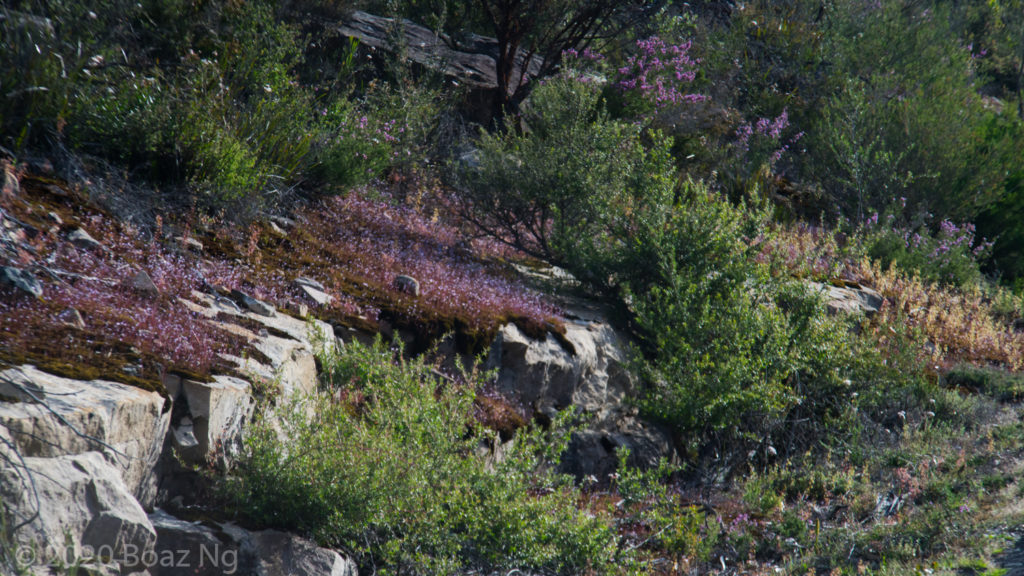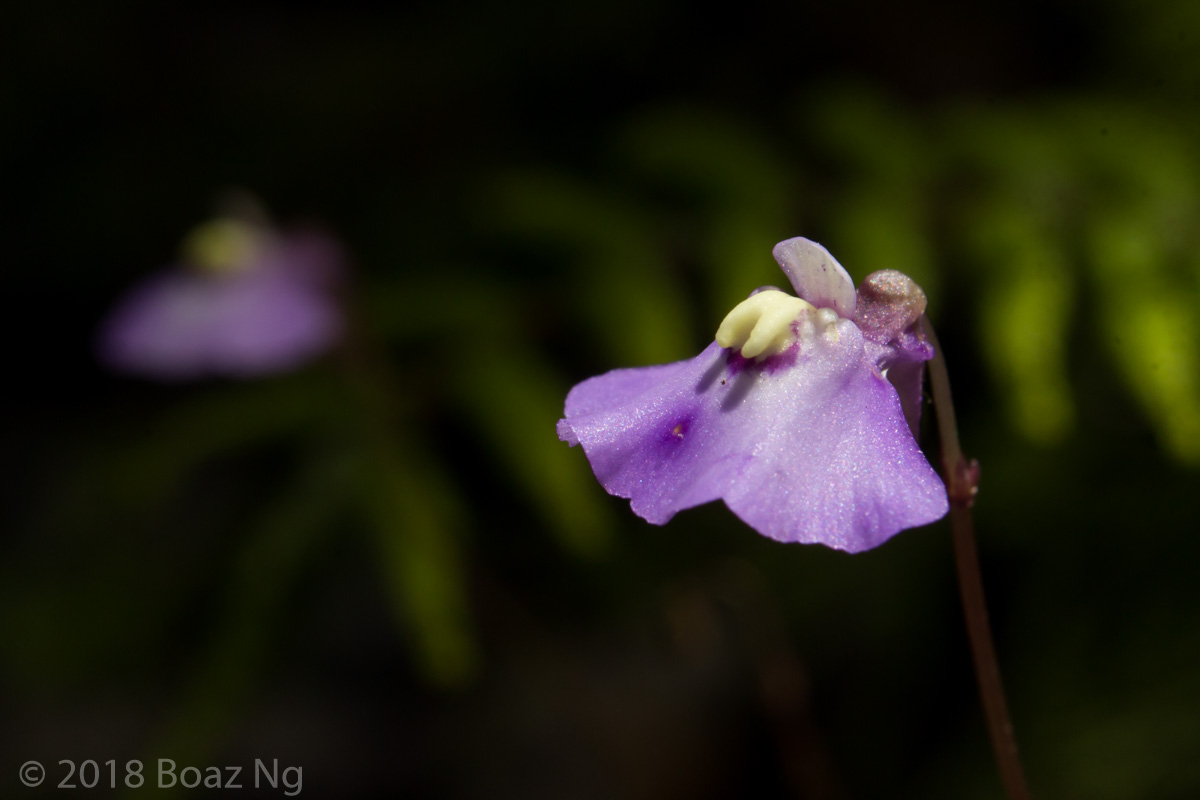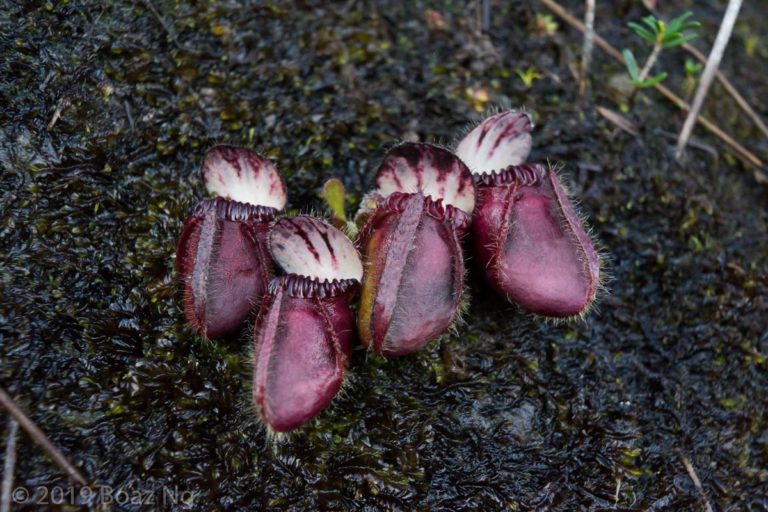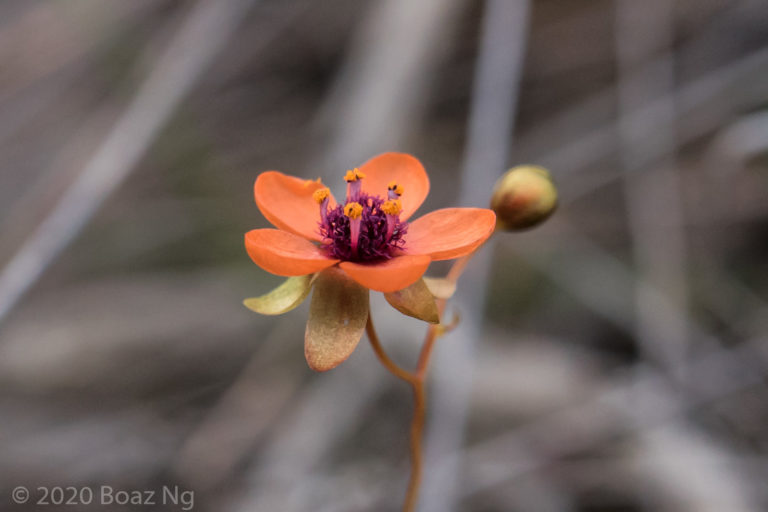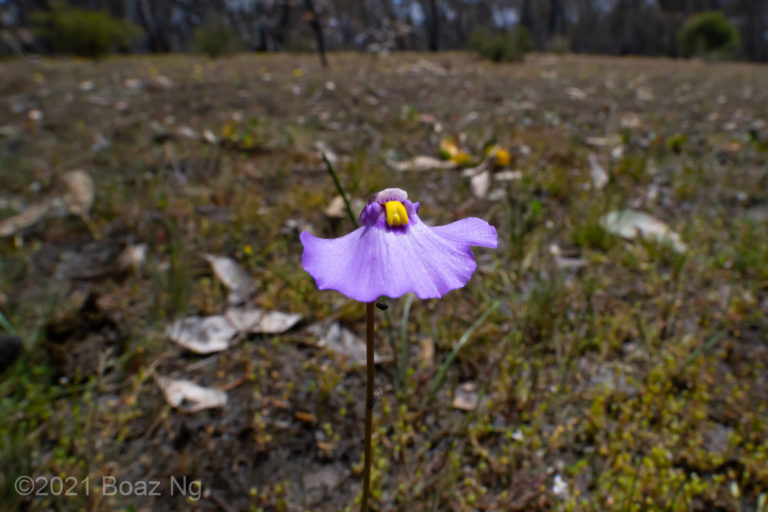Utricularia grampiana is a relatively obscure species endemic to the Grampians mountain range (and a neighbouring peak) in Victoria, Australia. This annual species forms attractive en-mass blooming events during the spring and early summer (if it’s wet enough) before setting seed and dying in the bone dry Australian summer.
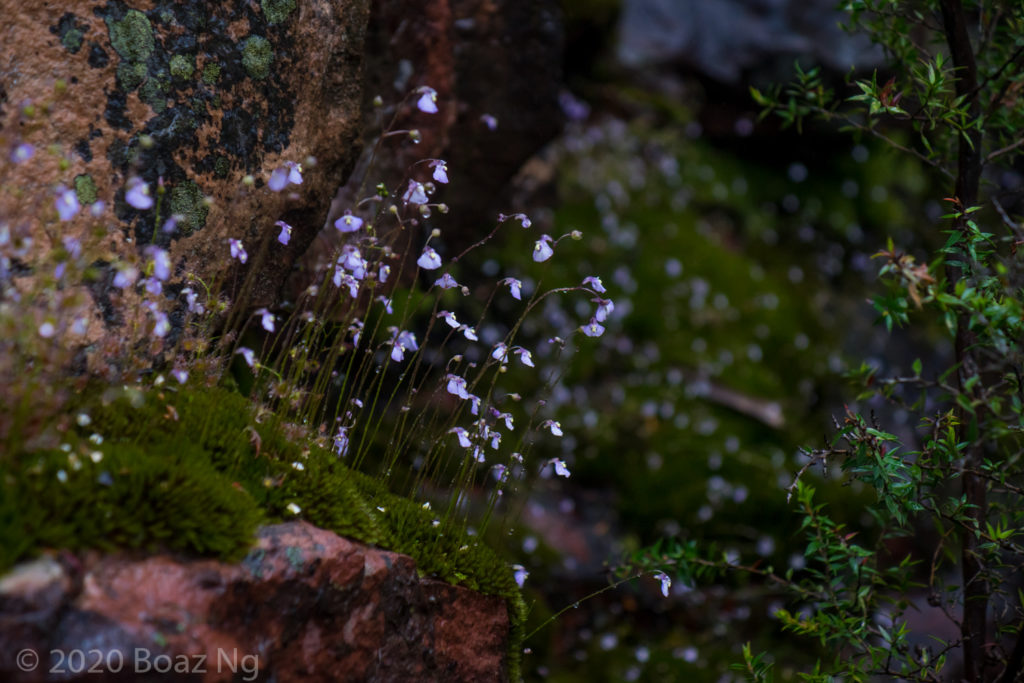
Utricularia grampiana has small purple blooms with a slightly flared and modestly sized lower corolla. In the middle of the corolla is two prominent yellow protuberances, which overhang the skirt of the petal substantially. The area surrounding the yellow is usually a darker shade of purple.
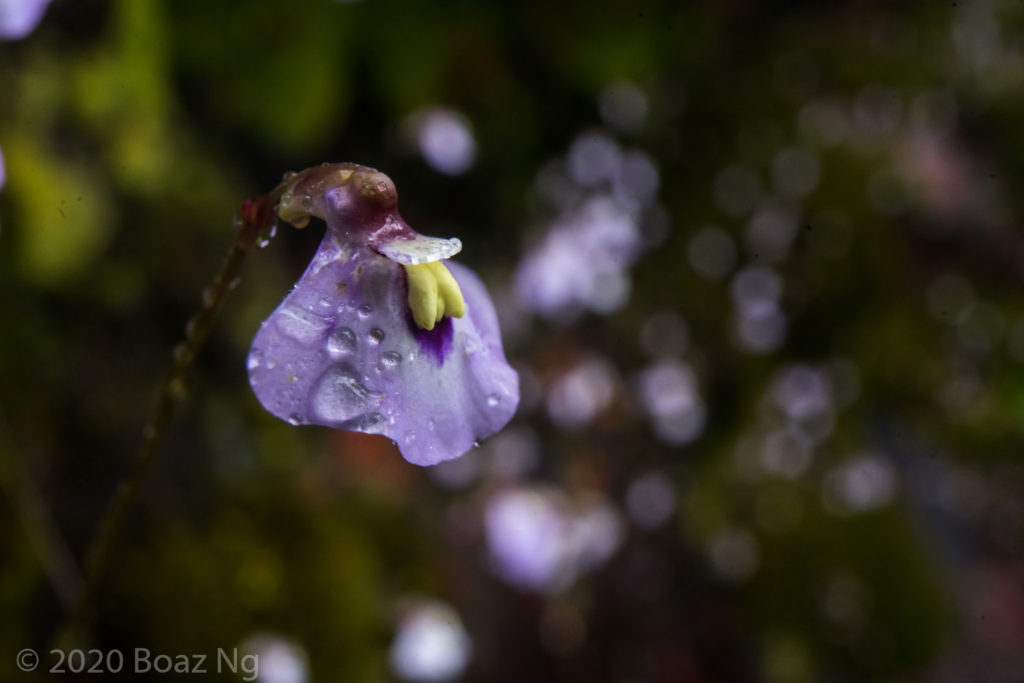
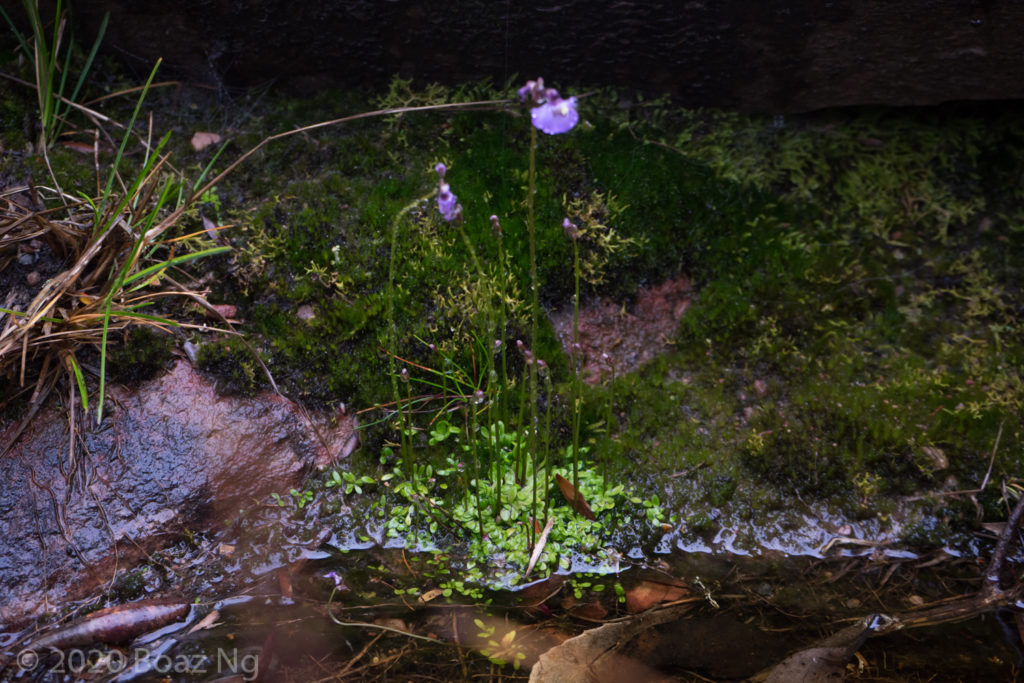
The species grows on wet cliff faces and rock seepages where it grows anchored in moss. These environments are located on the upper slopes of mountains and the water is predominately fed by precipitation. In the cooler months, these slopes retain enough water to provide a constant drip to the habitats before drying out in the summer heat. The high elevation within the morning fog, combined with orographic lift contributes to the wet environment.
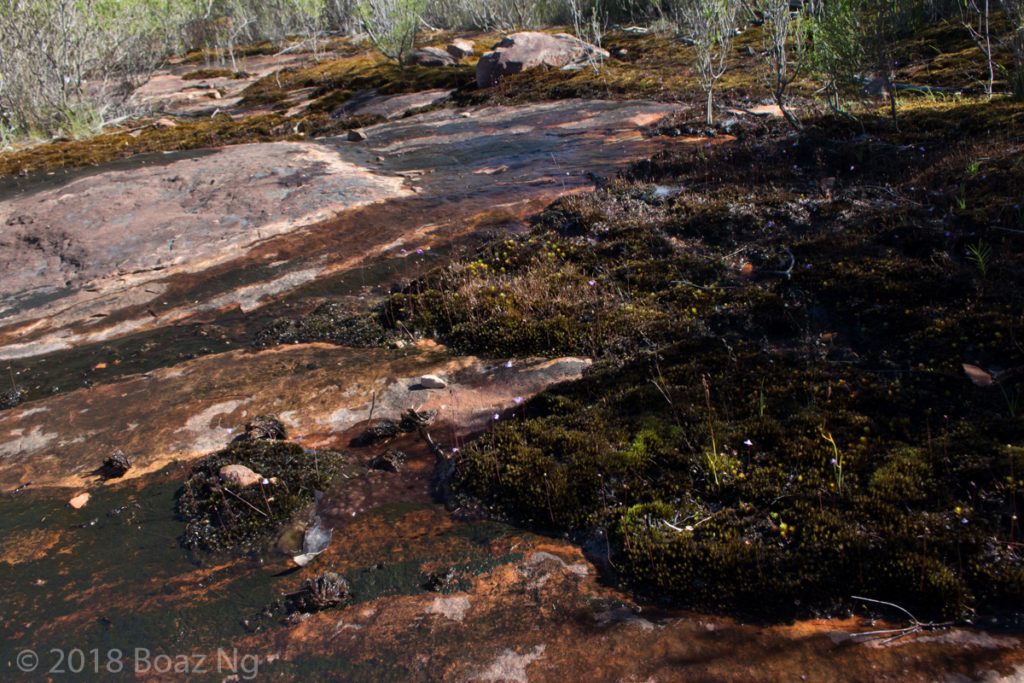
Utricularia grampiana was only formally distinguished from the similar U. dichotoma in 2014. It is separated by morphological and growth-habit differences. Whereas U. grampiana tends to grow terrestrially on rock faces, U. dichotoma generally prefers wet or submerged niches such as shallow creeks and ditches. The floral bracts of U. grampiana are attached in the middle, with upper and lower lobes while those of U. dichotoma are attached at the base. U. grampiana is distinguished from other purple flowered species by its two prominent yellow protuberances (in contrast to three in U. dichotoma and U. barkeri), which overhang the lower corolla substantially.
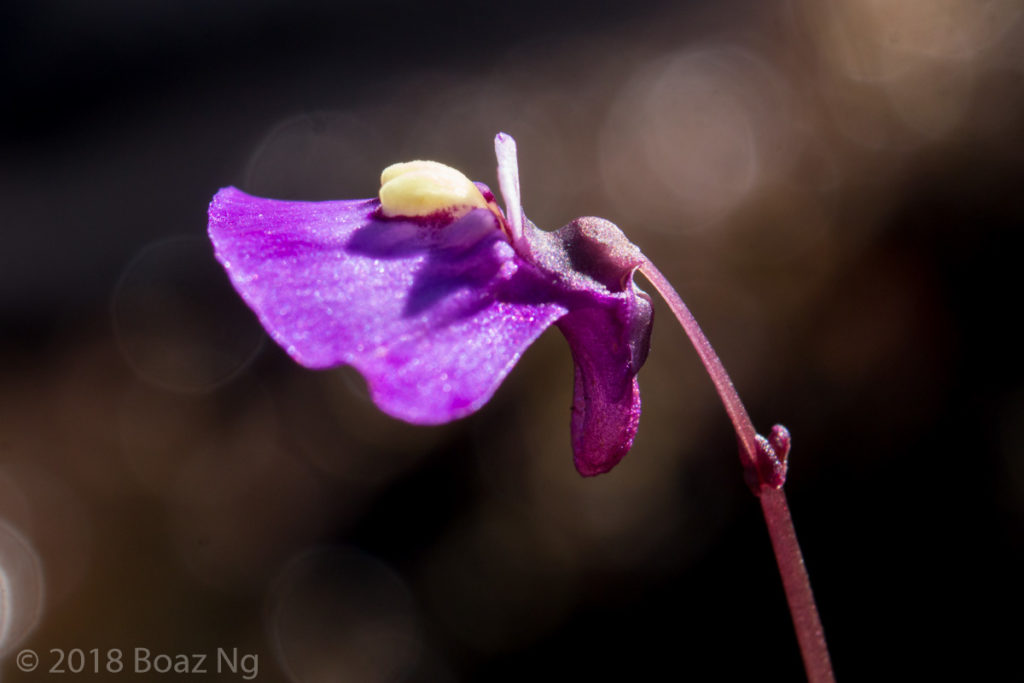
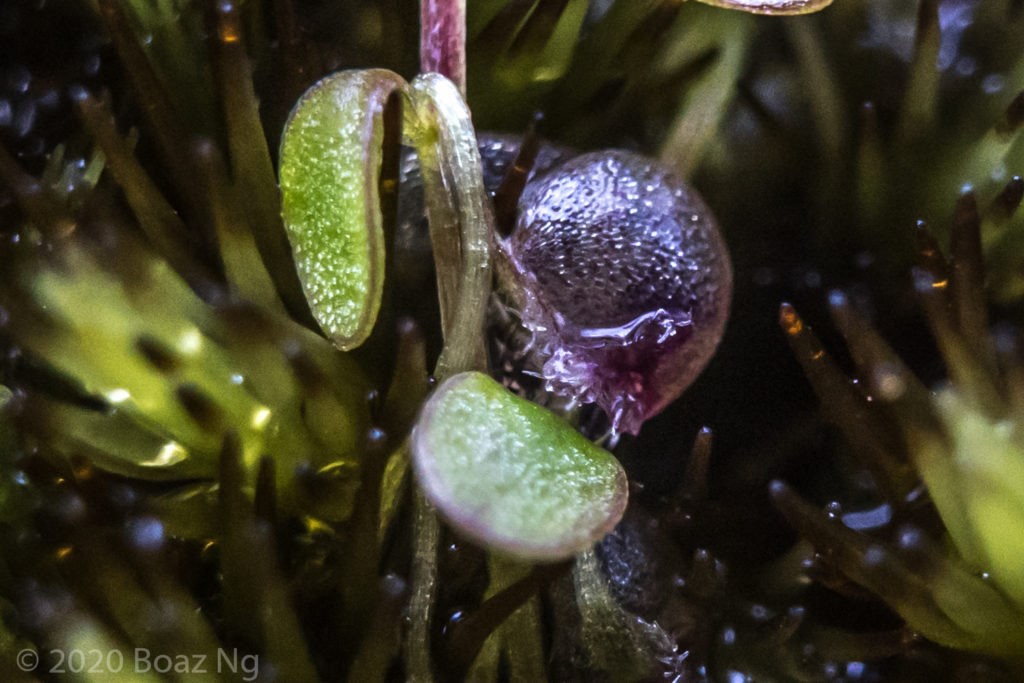
The bladder trap of U. grampiana
In terms of variation, the shape of the flower can vary slightly between individuals although I’m not sure if it’s a systematic trait. The colour of the flower seems to be somewhat related to the environment, with plants in shaded niches being generally paler. Some individual plants are particularly vivid and I was able to locate one white flowered specimen.
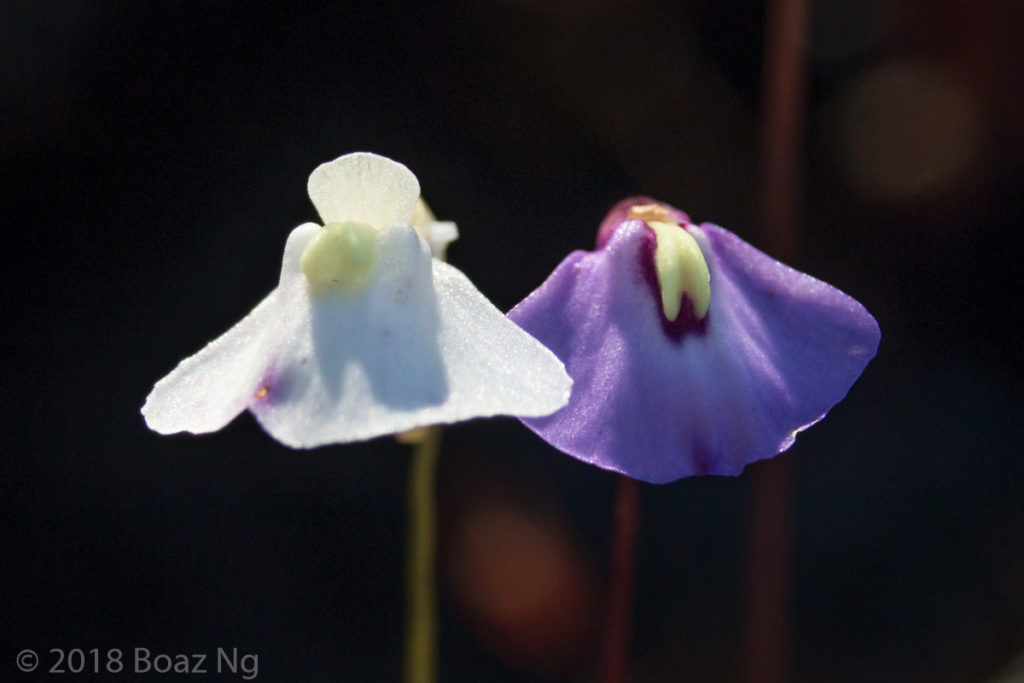
In terms of conservation, the species grows almost entirely in the protected boundary of a national park. The species seems to be fairly abundant although their range is naturally extremely restricted. The annual nature of the plant means that it is particularly susceptible to the effects of climate change.
